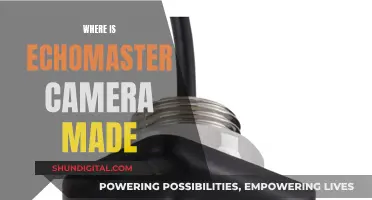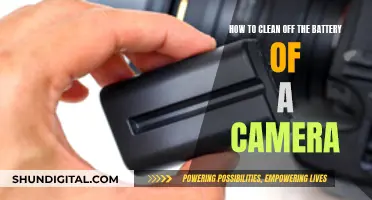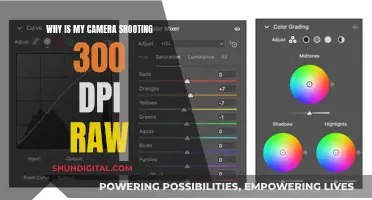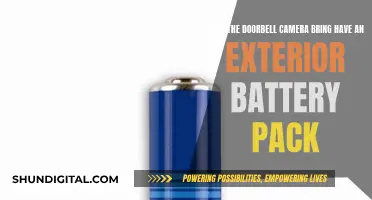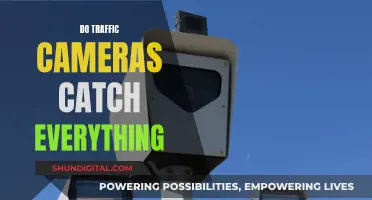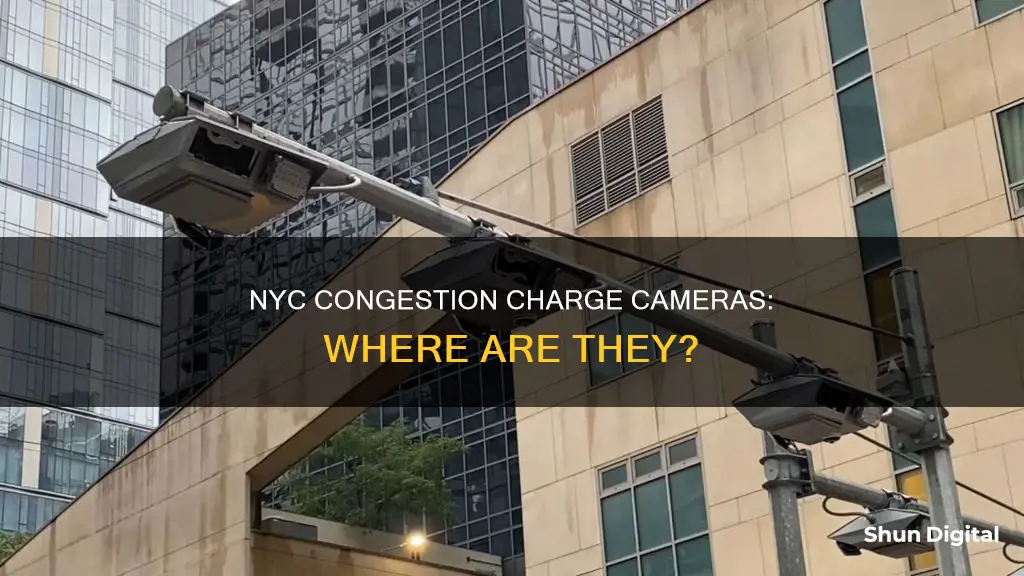
New York City's congestion charge cameras are a hotly debated topic. The city started installing the first of 120 toll readers on W61st Street and West End Avenue, with plans to charge drivers heading below 60th Street in Manhattan a congestion fee ranging from $9 to $23. This scheme aims to reduce the number of vehicles entering Manhattan, improve air quality, and raise funds for transit upgrades. However, it has faced opposition from some drivers, New Jersey officials, and local residents who will be affected by the charges. Despite the controversy, New York is pressing forward with the plan, which is set to go into effect in spring 2024, making it the first US city to implement congestion charges.
| Characteristics | Values |
|---|---|
| Number of toll readers | 120 |
| Location of first toll readers | W61st Street and West End Avenue |
| Direction monitored | Drivers heading below 60th Street in Manhattan |
| Charge per vehicle | $9 to $23 |
| Start date | Spring 2024 |
| Installation cost | $507 million |
| Detection points | Lincoln and Holland Tunnels, Ed Koch Queensboro Bridge, Queens-Midtown Tunnel, Williamsburg Bridge, Manhattan Bridge, Brooklyn Bridge, and the Hugh L. Carey Tunnel |
What You'll Learn
- Congestion charge cameras installed on W61st Street and West End Avenue
- New Jersey governor files lawsuit against congestion tolling program
- Toll readers to be located around Lincoln and Holland Tunnels
- MTA says congestion pricing will lead to a stronger system and safer environment
- New York Governor Kathy Hochul says congestion pricing will mean cleaner air and less congestion

Congestion charge cameras installed on W61st Street and West End Avenue
Congestion charge cameras have been installed on W61st Street and West End Avenue in Manhattan, New York City. The cameras are part of a scheme to charge drivers entering the heart of the city, from 60th Street downwards, a congestion fee of between $9 and $23.
The first of 120 toll readers were installed on W61st Street and West End Avenue on Friday, July 21, 2023, with the scheme set to go into effect in Spring 2024. The cameras will monitor and charge drivers heading into the congestion zone.
The scheme is expected to reduce the number of vehicles entering Manhattan by up to 20%, with the money raised going towards transit upgrades. The congestion charge has proved controversial, with New Jersey Governor Phil Murphy filing a lawsuit to block the scheme, and Uber driver Jimmy Gomez, aka @blacktiger12, criticising the move on social media.
However, some locals are in favour of the scheme, with Hell's Kitchen safe streets advocate Charlie Todd saying: "Personally, I am counting down the days for Hell's Kitchen to get cleaner air, quieter and safer streets, more money for transit and less congestion on our roads."
Charging Night Owl Cameras: A Step-by-Step Guide
You may want to see also

New Jersey governor files lawsuit against congestion tolling program
On Friday, 21 July 2023, New Jersey Governor Phil Murphy filed a lawsuit against the federal government to block New York's congestion tolling program. Murphy claimed that the federal government had fast-tracked the approval process and that the tolls were "anti-environmental, anti-commuter, and anti-business".
The congestion tolling program would see commuters charged between $9 and $23 to enter the busiest parts of Manhattan. The program is expected to go into effect in the spring of 2024 and will be run by the MTA. The toll readers will be located around the Lincoln and Holland Tunnels, the Ed Koch Queensboro Bridge, the Queens-Midtown Tunnel, the Williamsburg Bridge, the Manhattan Bridge, the Brooklyn Bridge, and the Hugh L. Carey Tunnel.
In response to the lawsuit, MTA Chairman Janno Lieber stated that the transportation agency "got the federal environmental approval" and that the Environmental Assessment is 4,000 pages long. The MTA's Chief External Relations, John J. McCarthy, also responded to Murphy, stating that the lawsuit is baseless and that the "federal approval – and the entire process – will stand up to scrutiny".
Governor Murphy's lawsuit argues that the Federal Highway Administration (FHWA) and the U.S. Department of Transportation (USDOT) did not properly follow their own environmental review process. The lawsuit focuses on the potential harmful effects that congestion pricing could have on Bergen County, New Jersey. The lawsuit argues that the FHWA should require the MTA to conduct a more thorough review of the pricing plan's impacts on the county. Bergen County is the most populous county in New Jersey and has limited transit access beyond diesel busing. The lawsuit states that the FHWA "failed to meaningfully consider, propose, and commit to mitigate the increased air and noise pollution resulting from shifting traffic patterns".
Governor Murphy has also signed legislation to confront the "unjust taxation of New Jerseyans by other states". The legislation provides tax credits for New Jersey residents who dispute aggressive tax policies imposed by other states and creates a $35 million grant program to encourage companies that operate outside the state to assign their employees who live in New Jersey and to open offices in the state.
Charging Your Canon Powershot SX40: A Quick Guide
You may want to see also

Toll readers to be located around Lincoln and Holland Tunnels
Toll readers are set to be installed around the Lincoln and Holland Tunnels in New York City as part of the city's congestion charge scheme. The toll readers will be located on both the West and East sides of Manhattan, with 120 detection points in total. The Lincoln Tunnel, which connects Weehawken, New Jersey, to Midtown Manhattan, consists of three vehicular tubes with two traffic lanes in each tube. The Holland Tunnel, on the other hand, connects Jersey City, New Jersey, to Lower Manhattan.
The congestion charge scheme aims to reduce traffic congestion and improve air quality in Manhattan. Under the scheme, drivers will be charged a fee ranging from $9 to $23 to enter the congestion zone below 60th Street in Manhattan. The charges will vary based on the time of day and vehicle class, with a once-per-day cap on charges for taxis and funding for electric truck conversions. The scheme is expected to go into effect in the spring of 2024 and will be the first of its kind in the United States.
The toll readers will be installed by the MTA, who have started the process by putting up the readers along 61st Street and West End Avenue. The MTA expects this to create a stronger system overall and a safer environment. The toll readers are expected to cost $507 million to design, build, and operate.
The congestion charge scheme has faced some opposition, including a lawsuit from New Jersey Governor Phil Murphy, who argues that the tolls are "anti-environmental, anti-commuter, and anti-business". However, the MTA has defended the scheme, stating that it has received federal environmental approval and will encourage commuters to use public transportation.
Olympus Pen Camera Battery: Charging Time Explained
You may want to see also

MTA says congestion pricing will lead to a stronger system and safer environment
Congestion pricing in New York City involves charging drivers tolls to enter certain congested areas of the city. The first of 120 toll readers was installed in July 2023 on W61st Street and West End Avenue, with more popping up across the city from 60th Street down. The toll readers will charge commuters between $9 and $23 to enter the Big Apple.
The MTA has said that congestion pricing will lead to a stronger system and safer environment. Indeed, congestion pricing has the potential to improve the environment and create a stronger, safer system in several ways. Firstly, it will reduce the number of vehicles entering Manhattan, thereby reducing vehicle miles travelled, fuel consumed, and pollutant emissions. This will lead to cleaner air and a more environmentally friendly city.
Secondly, congestion pricing will reduce stop-and-go traffic, which will, in turn, reduce fuel consumption and emissions generated by accelerations and decelerations. This will not only improve air quality but also make the streets safer for pedestrians and cyclists. With fewer cars on the road, there will be less risk of accidents, and it will be easier for emergency vehicles such as ambulances and fire engines to navigate the city.
Thirdly, reduced traffic will create a more livable and pedestrian-friendly environment, with less noise from traffic. This will make the city more enjoyable for residents and tourists alike, encouraging economic activity and a stronger system overall.
In addition to the environmental and safety benefits, congestion pricing is expected to have a positive impact on public health. For example, a study of Atlanta, GA, during the 1996 Summer Olympics found that implementing measures to reduce traffic congestion led to a 28% drop in daily peak ozone levels and a nearly 20% decrease in hospitalizations for asthma.
Furthermore, the revenue generated from congestion pricing will be used to improve and expand public transportation options, giving commuters additional options for transit to and from the city. This includes investing in new trains and buses, improving accessibility, and performing necessary repairs to the existing transit system.
While there may be some concerns about the financial impact of congestion pricing on lower-income drivers, the MTA has said that there will be tax credits or discounts for low-income drivers who live south of 60th Street. There will also be pricing perks for overnight shift workers, and passenger cars and taxis will only be charged once per day.
Overall, congestion pricing in New York City is expected to lead to a stronger, more efficient, and safer transportation system, as well as a healthier and more environmentally friendly city.
Charging the Polaroid IE826: A Quick Guide
You may want to see also

New York Governor Kathy Hochul says congestion pricing will mean cleaner air and less congestion
New York Governor Kathy Hochul has announced that the Federal Highway Administration has completed its environmental review of the congestion pricing program, which will move forward with implementation. This program will charge vehicles a toll for entering Manhattan south of and inclusive of 60th Street, with some exclusions. The toll rate structure is yet to be determined by the Traffic Mobility Review Board, which will consider factors such as traffic patterns, traffic mitigation measures, operating costs, public impact, and vehicle types.
The congestion pricing program is expected to reduce traffic congestion, improve air quality, and provide critical resources to the MTA. Governor Hochul stated that it will "reduce traffic in our crowded downtown, improve air quality, and provide critical resources to the MTA." MTA Chair and CEO Janno Lieber added that the result will be "reduced traffic congestion and the establishment of one of the funding pillars for the MTA's historic 2020-2024 Capital Program."
The program has received support from various officials, including New York State Department of Transportation Commissioner Marie Therese Dominguez, New York City Mayor Eric Adams, and New York City Department of Transportation Commissioner Ydanis Rodriguez. They highlighted the potential benefits, such as cleaner air, decreased congestion, and targeted investments in more equitable and accessible public transportation.
The Environmental Assessment for the program found that it is expected to meet its objectives by reducing congestion and vehicle miles traveled, improving regional air quality, and providing financial support for capital upgrades to the MTA's public transportation system. The Final Environmental Assessment estimates a 15-20% reduction in the number of vehicles entering the Central Business District, which could lead to significant improvements in bus travel times and paratransit services.
However, there has also been opposition to the congestion pricing program. Some Uber and Lyft drivers, taxi drivers, and business owners have protested, citing the added financial burden. Additionally, New Jersey Governor Phil Murphy filed a lawsuit against the federal government to block the installations, arguing that the process was "'fast-tracked' and lacked a thorough environmental review.
Despite the mixed reactions, the congestion pricing program in New York City is moving forward, with toll collection potentially beginning as early as May 2024. The program aims to strike a balance between reducing traffic congestion and generating revenue for public transportation improvements, ultimately improving the quality of life for residents and commuters.
Charging Your GE Camera: A Quick Guide
You may want to see also
Frequently asked questions
The congestion charge cameras are located on the West Side of Manhattan, on both sides of the street from 60th Street down.
The cameras are part of a congestion pricing plan that will charge commuters a fee to enter the busiest areas of Manhattan.
The congestion charge is set to come into effect in the spring of 2024.
The pricing schedule will range from $9 to $23 per day.
The plan includes tax credits or discounts for low-income drivers living south of 60th Street, as well as pricing perks for overnight shift workers. Passenger cars and taxis will only be charged once per day.



